In February 2018, I was bemoaning the loss of some long-established plants in my predominantly native garden in the Hunter Valley.
We’d had far less than average rainfall and there was no end in sight to the drought. Along with vicious 45-degree days, the resilience of the garden, and me, was being tested!
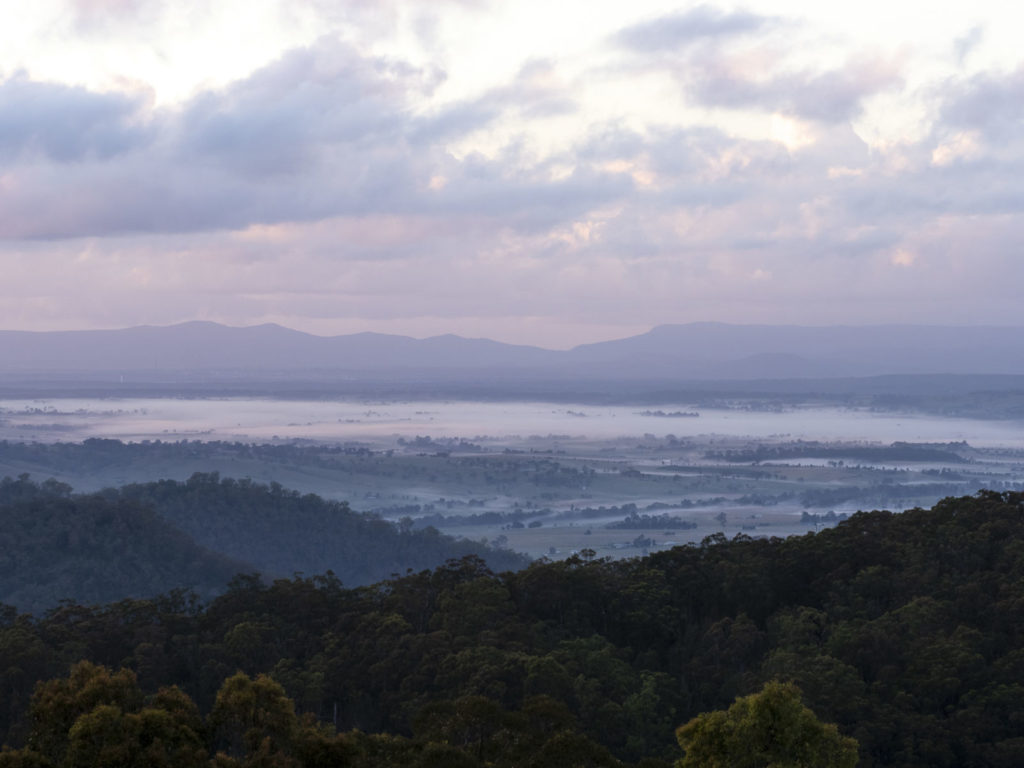
But ever hopeful (as most gardeners seem to be), I saw that some plants were still thriving despite the conditions while others turned up their toes. (https://gardendrum.com/2018/02/15/i-love-a-sunburnt-country-but-wish-it-would-rain/)
So, 10 months on, what’s changed? Which plants are thriving? Which ones died? Which ones recovered? And what does it mean for my garden in this increasingly volatile climatic world?
Well, fortunately, much of the garden thrives, despite the conditions as seen below! Top left clockwise, Dodonea megazyga, Toona ciliata (Red Cedar), Hibiscus ‘Barambah Creek’, Prostanthera phylifcifolia, Leptospermum ‘Merinda’ in the middle.
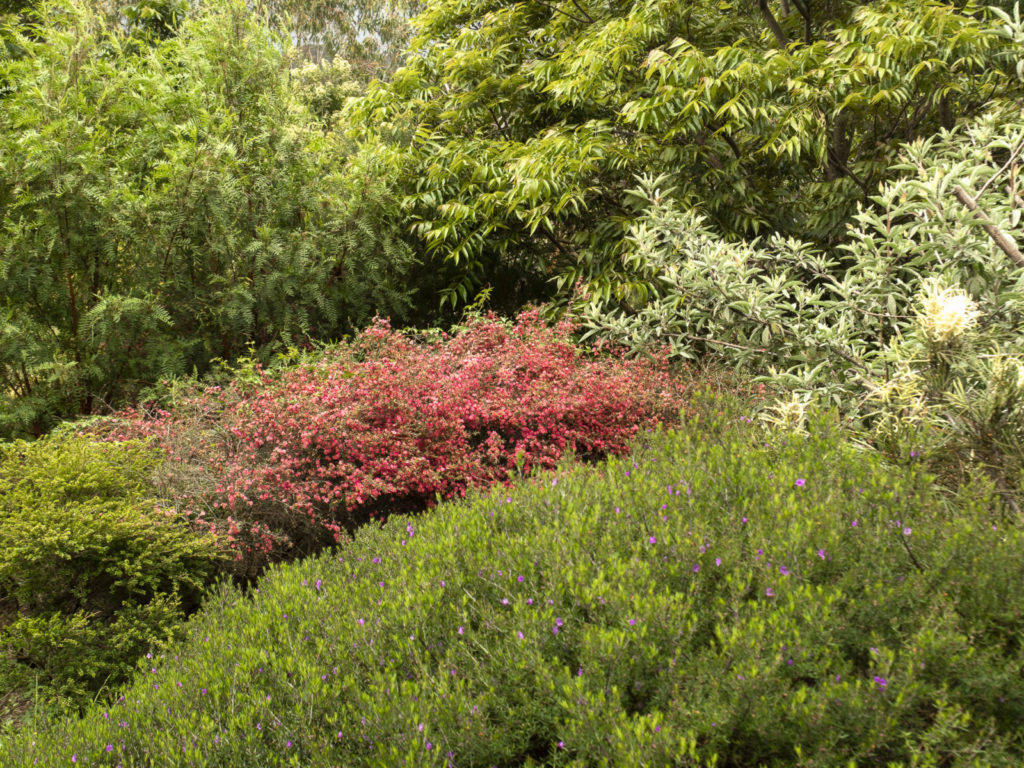
Did the grey clouds gather and give us soaking rain? (From Dorothea Mackellar, I love a sunburnt country)
Well yes, but not as much as usual. We are still well below long-term rainfall averages (perhaps we have to re-consider what average means?).
After writing the article in early February, we had good falls later that month and in March, and two decent falls in October and November. The creeks started running and tanks are mostly full but the soil dries out quickly!

Success versus failure of plants
Ten months on, I observed that:
- Some plants have kept blooming throughout the dry conditions
- Some struggled but then responded or recovered when rain came
- Some got sick and are dead or dying.
Success versus failure seems to be driven by several factors:
- Is the plant in the right spot with its ideal microclimate?
- Is the plant adaptable to extreme variations in weather, both rain and heat?
- Are there factors at play that I can’t see impacting survival?
Here is how the plants in my garden responded, (noting that my garden is heavy clay with strong winds):
Plants in the right spot that thrived throughout the dry
Acacia fimbriate, Bronze Leaf Wattle
Acacia vestita, Harry Wattle
Breynia
Callistemon
Chamelaucium, Wax flower
Chrysocephalum apiculatum, Billy Buttons
Clerodendrom tomentosum
Dendrobium speciosum, Orchids
Eremophila
Grevillea
Hymenosporum flavum, Native Frangipani
Leptospermum
Macadamia
Melaleuca
Pittosporum multiflorum, Orange Thorn
Prosthanthera phylicifolia
Thomasia
Local jasmine
Thomasia
Thryptomene ‘FC Payne’
Plants which struggled and then recovered
Acacia cognata
Anigozanthos, Kangaroo Paws
Banksia ‘Giant Candles’
Banksia integrifolia prostrate ‘Roller Coaster’
Hibiscus
Lomandra longifolia and hystrix
Syzygium, Lillypilly
Plants which died or are dying
Acacia vestita (under gum trees, perhaps end of life)
Banksia integrifolia (tree)
Banksia plagiocarpa, Hinchinbook Banksia (too dry)
Correa (generally reflexa)
Corymbia ficifolia ‘Summer Beauty
Doryanthes excelsa (those in the wrong spot with insufficient water)
Corymbia citriodora, Lemon Scented (in shallow soil)
Eucalyptus pauciflora, Snow gum (in shallow soil)
Hakea ‘Burrendong Beauty’
Prostanthera – the soft leaf ones
Westringia ‘Smokey’
Plants in the right spot which thrived throughout the dry
The grevilleas have continued to put on an extensive display, feed the birds and bees and stay lush and green throughout the dry conditions. The ‘spots’ they like in my garden have good drainage and room to grow. Those planted, even 10 – 12 years ago, have done well. Those in periodically boggy ground (i.e. heavy clay after rain) or with too much shade or competition died.
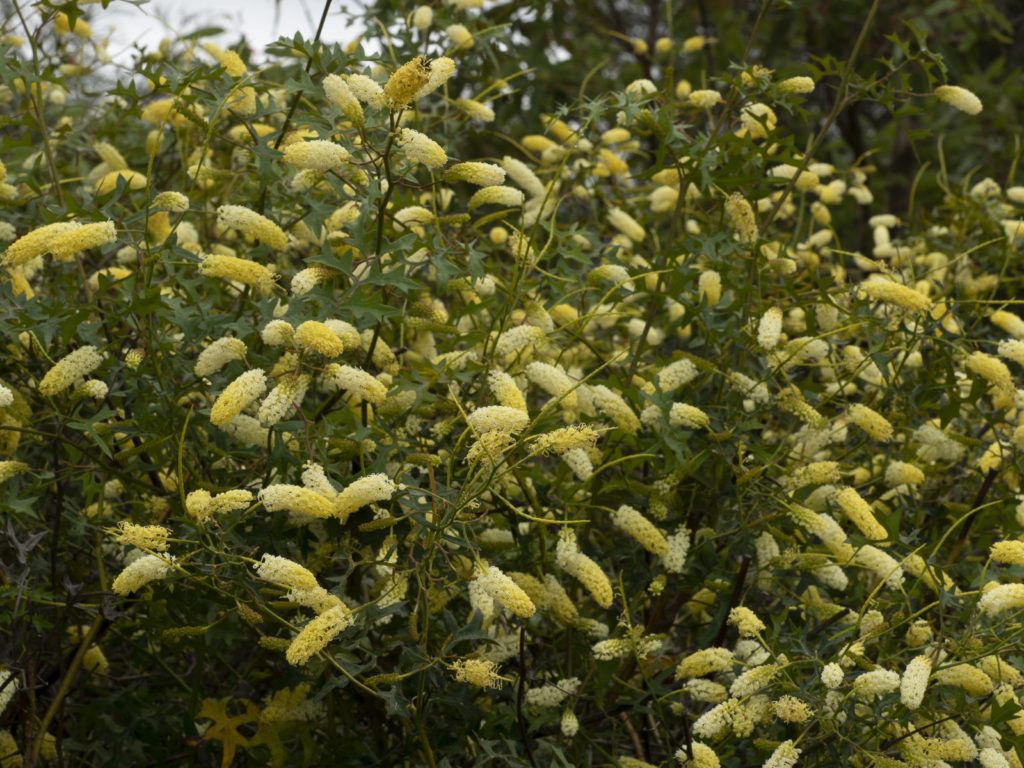
This Grevillea flexuosa ‘Zig Zag’ has been growing happily for many years putting on a magnificent display of honey-scented flowers each year.
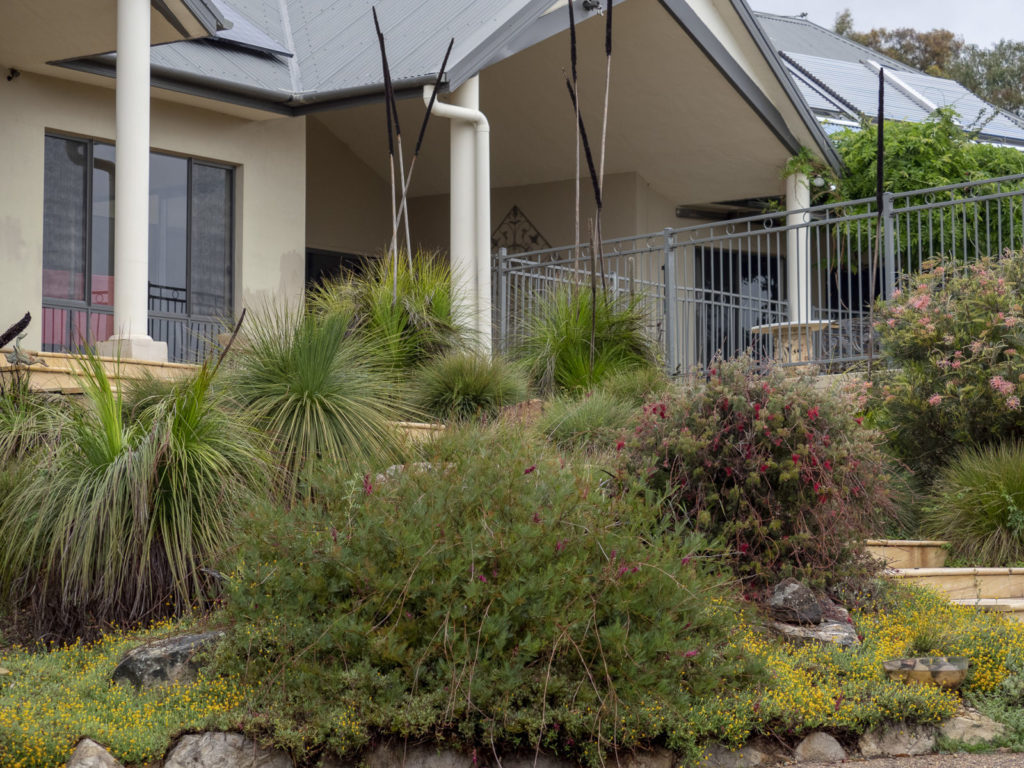
Grevillea ‘Minmi Pink’ on the right, Grevillea ‘Shaggy’ in the middle and Grevillea ‘Purple Haze’ on the left) put on a display for much of the year. The Grevillea ‘Honey Gem’ and ‘Moonlight’ are also blooming.
The yellow Chrysocephalum apiculatum growing around these grevilleas seems quite tolerant of dry conditions. They flower and spread vigorously – they are the green leaf variety (rather than the grey leaf one) and may even have a synergistic effect with the grevilleas and grass trees (Xanthorrhoea) by keeping the soil cool and providing ongoing compost.
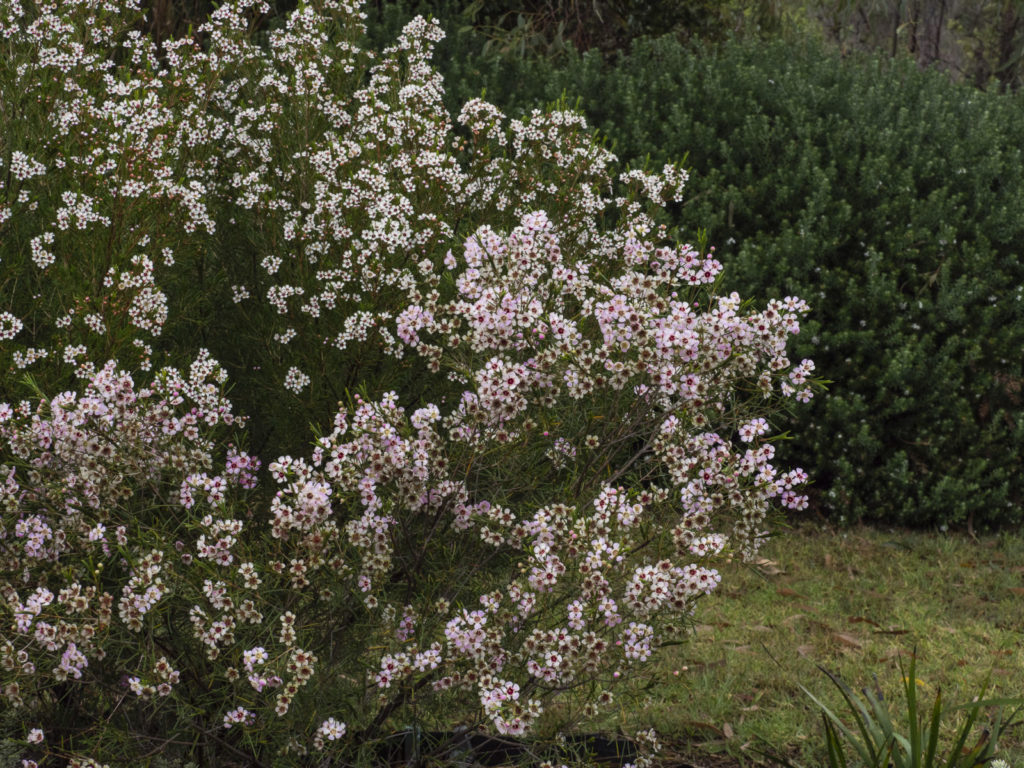
There’s a reason why people love wax flowers (Chamelaucium) pictured above. From WA, these small shrubs keep growing and flowering for long periods of the year even in tough conditions. These two are growing in very shallow soil on a slope. They cope with dry or damp soil can be counted on for an attractive display for much of the year.
Over the last few years, given the variability of the weather, I’ve also planted or allowed to self-sow many more local species. One of these local plants is Clerodendron tomentosum.
Also known as downy chance, hairy lolly bush, or hairy clerodendrum, this small tree is native to the Hunter Valley and grows freely in the surrounding bush. They put on a beautiful display of creamy white flowers, with black berries surrounded by a vibrant red calyx in summer – hence the lolly common name. They have an elegant umbrella shape and large, velvety grey/green leaves. The birds love them. There doesn’t seem to be a particular place they prefer in the garden, except of course under other trees and shrubs that the birds visit.
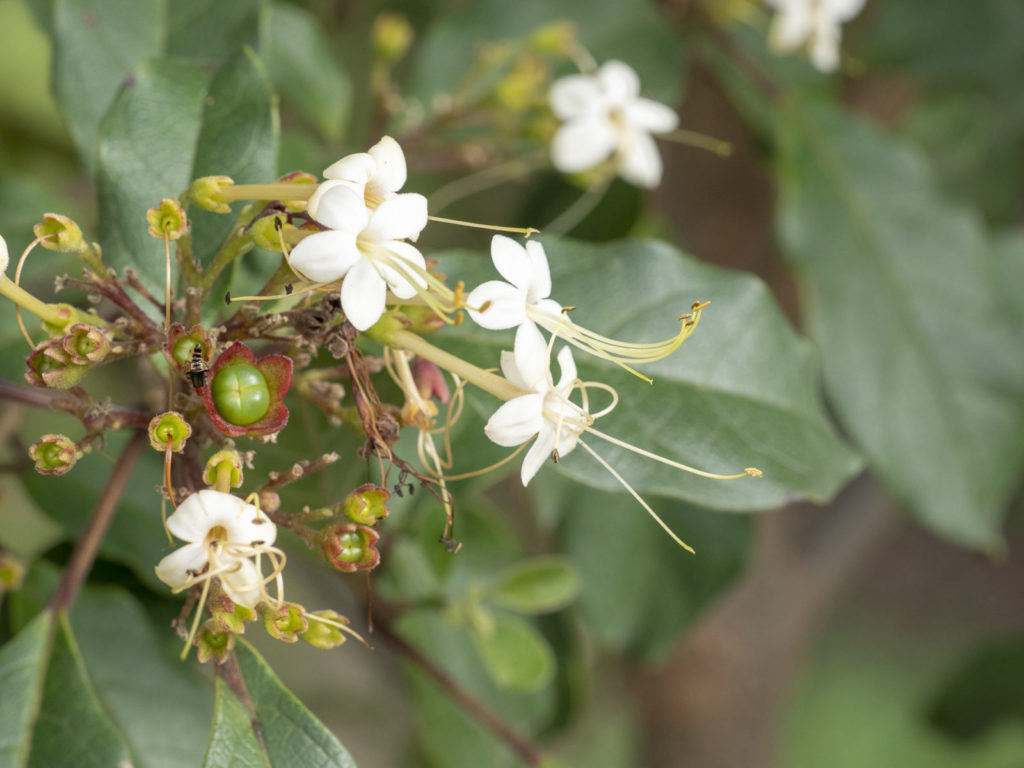
Another local self-seeder is orange thorn, or Pittosporum multiflorum (also known as Citriobatus pauciflorus, wallaby apple and native orange). It’s not good close to the path, due to the prickles, but has a small, round leaves with a lovely lime green colour which can be mounded into ball shapes. It has an abundance of little orange berries which the birds love and is a good bush food, if one is starving.
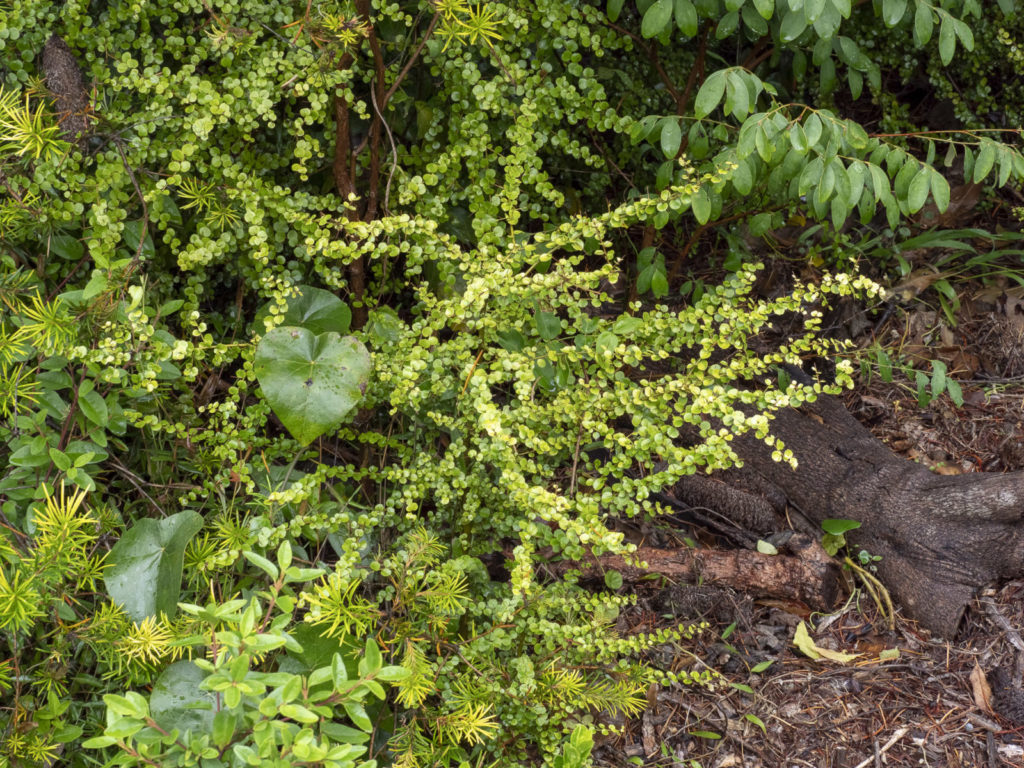
Other indigenous species which have popped up in the garden include a deliciously scented local jasmine, possibly Jasminum volubile, as well as Cissus antarctica, Breynia, Hardenbergia violacea, Scaevola and Ozothamnus. Flannel flowers have self-seeded, as have the WA and other paper daisies.
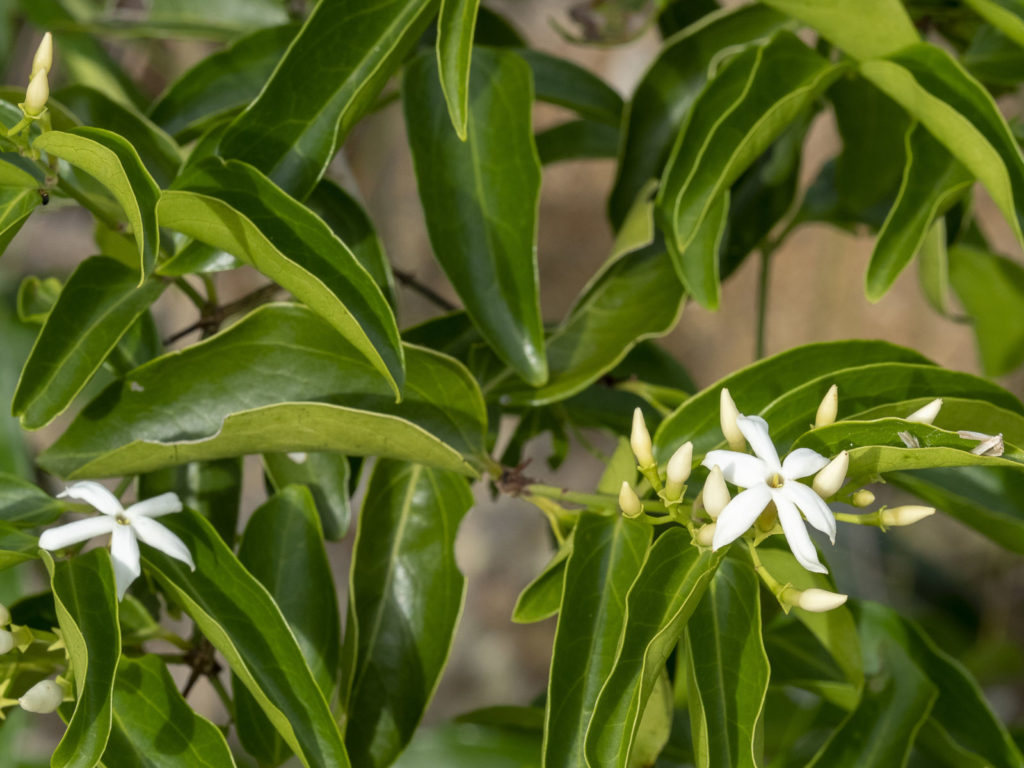
The local Sydney rock orchid, Dendrobium speciosum (syn. Thelychiton speciosus*) is very resilient in the right spot. Located under the spotted gums (Corymbia maculata) in rocks and bark, they get minimal water but put out numerous racemes of showy creamy white flowers. Their only challenge is the nasty dendrobium beetles (Stethopachys formosa) which decimate the leaves. But this happens regardless of the rain!
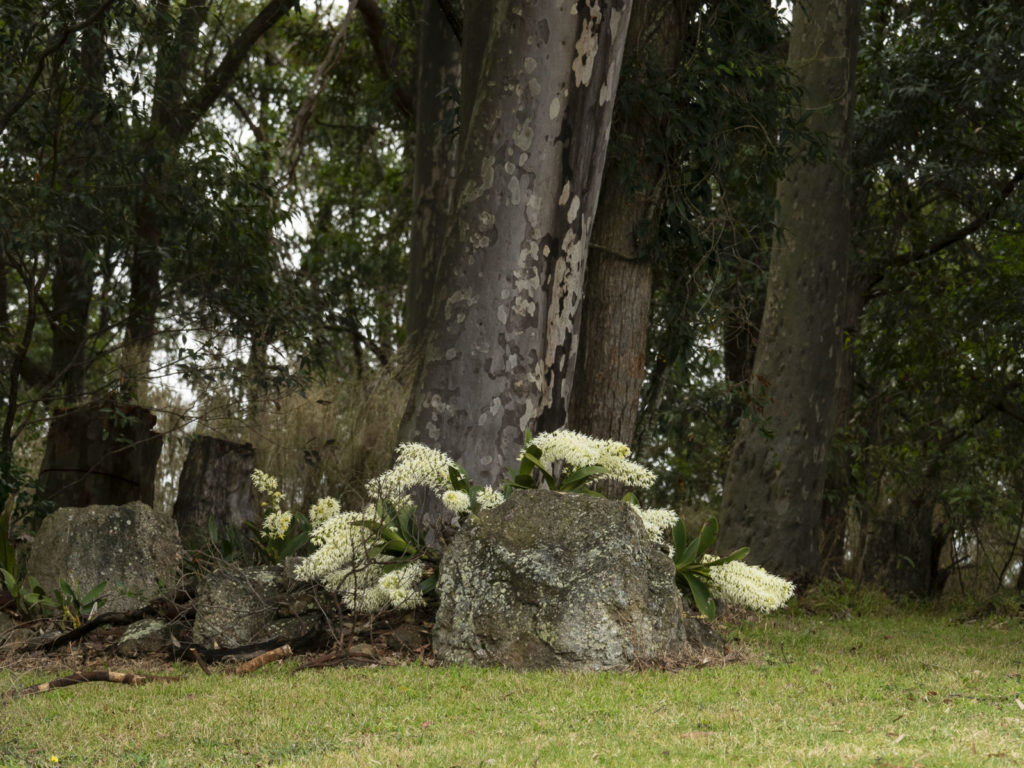
The Callistemon have flowered fairly well this year, although not as copiously as in previous years. They prefer more moisture but have coped with less this year. Seen below against the Leptospermum ‘Cardwell’, they provide lovely colour in spring.

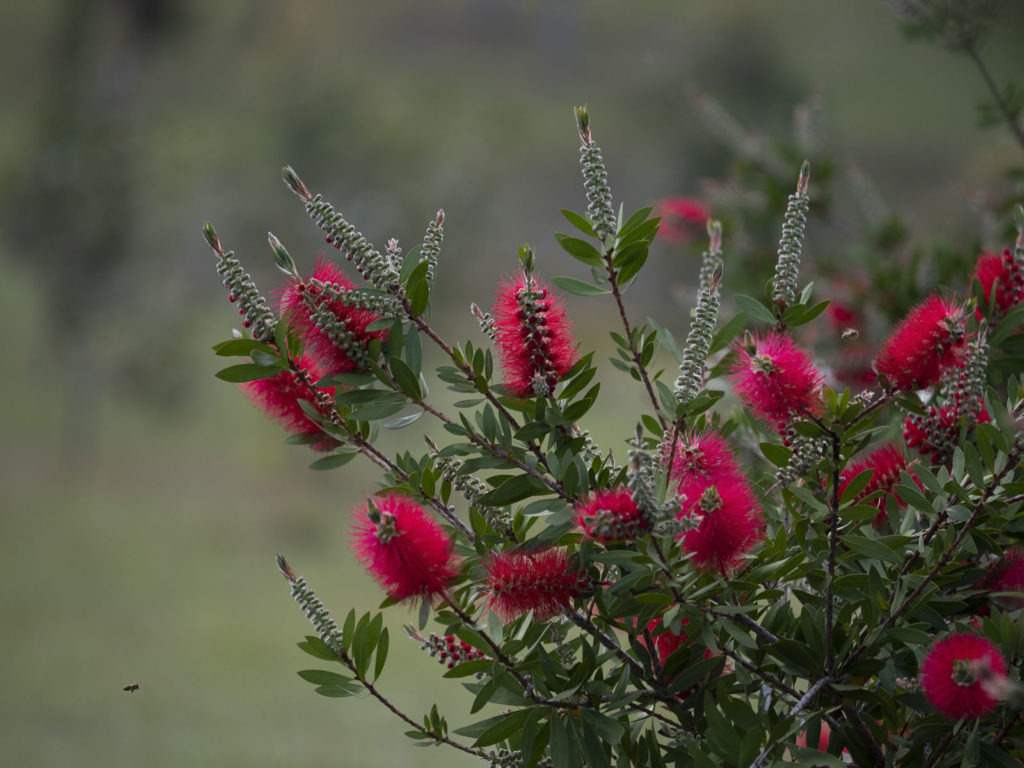
Similarly, the leptospermum have also continued to flourish – the scarlet one below is Leptospermum ‘Merinda’ which when mass planted provides a spectacular burst of colour against the darker green leaves.
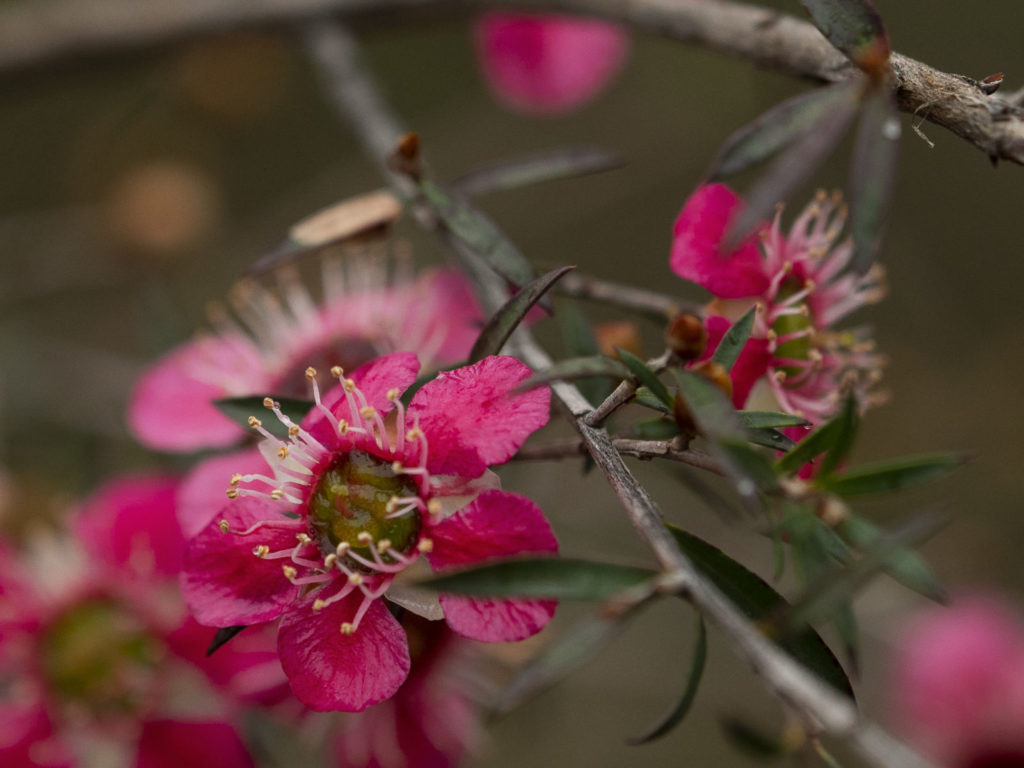
The macadamia trees planted 5 years ago (Macademia integrifolia x tetraphylla ‘Pinkalicious’) in heavy soggy clay have flowered for the first time. I planted these as a windbreak and screen as well as providing nuts. They are tough trees and the flowers are quite beautiful.
Plants which struggled but recovered once rain came
The kangaroo paws (Anigozanthos) are now flowering – later in the season than previous years. Those in the drainage line from the driveway are doing well and those in drier areas not so well. When mass planted, they are very rewarding for both me and the little birds flitting in and about.
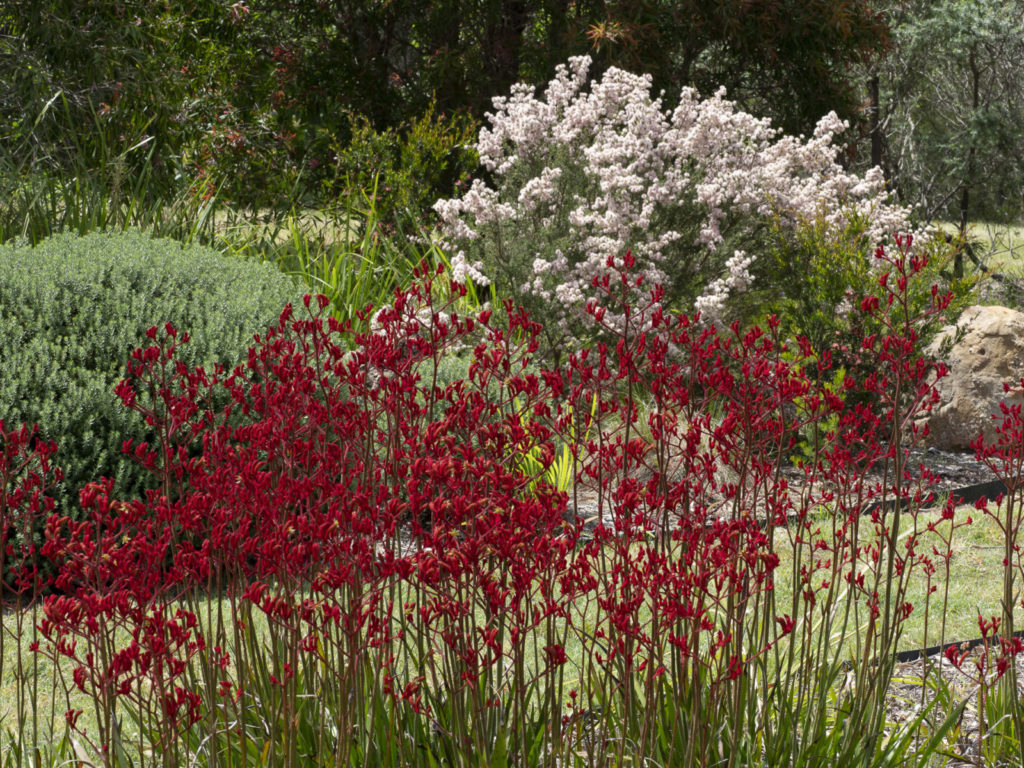
Several Banksia ‘Giant Candles’ planted in 2005 continue to grow and flower but the flowers this year were much smaller than in past year. Previously, I’ve had flower stalks 10cm long, yet this year, they are stunted. However, the shrub itself is dense and growing well providing good and shelter for the birds. These banksias get moisture from a slight slope and are planted in fairly deep soil.
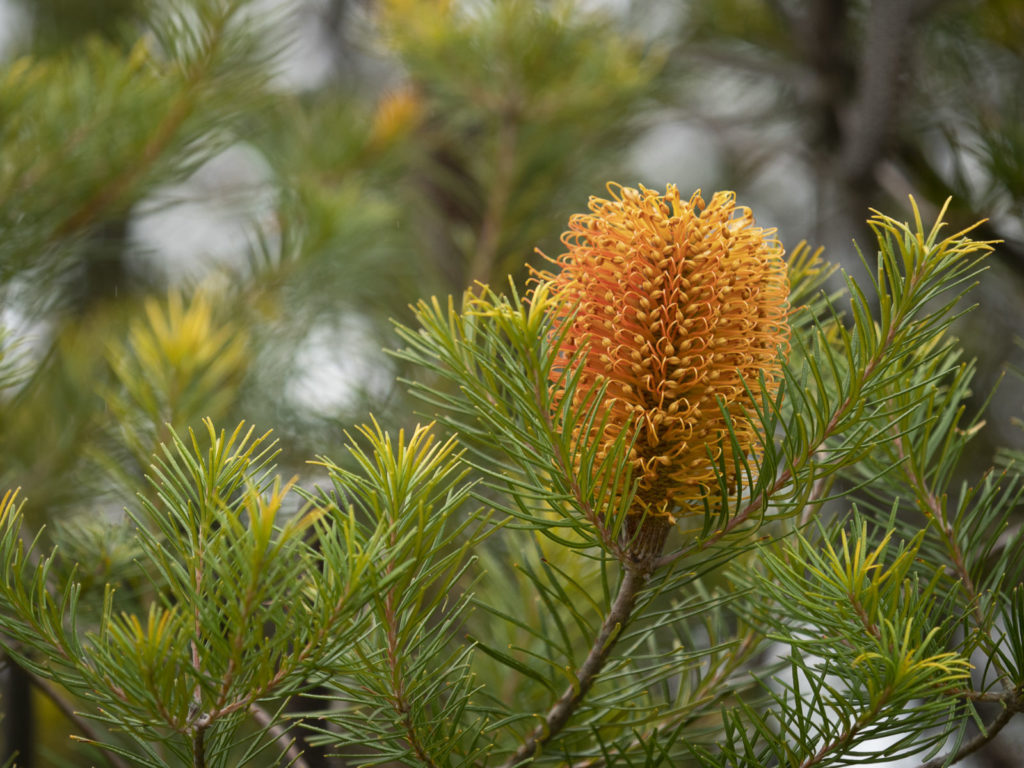
The acacias are a mixed story.
Acacia cognata ‘Limelight’ had browned off, no doubt a function of the 45-degree days as well as the lack of rain. However, they have come back strongly putting on new flushes of attractive lime-green growth. Seen here with the Chorizema, protected from marauding rabbits, and a sad grass tree (Xanthorrhoea), it is back to its former glory.
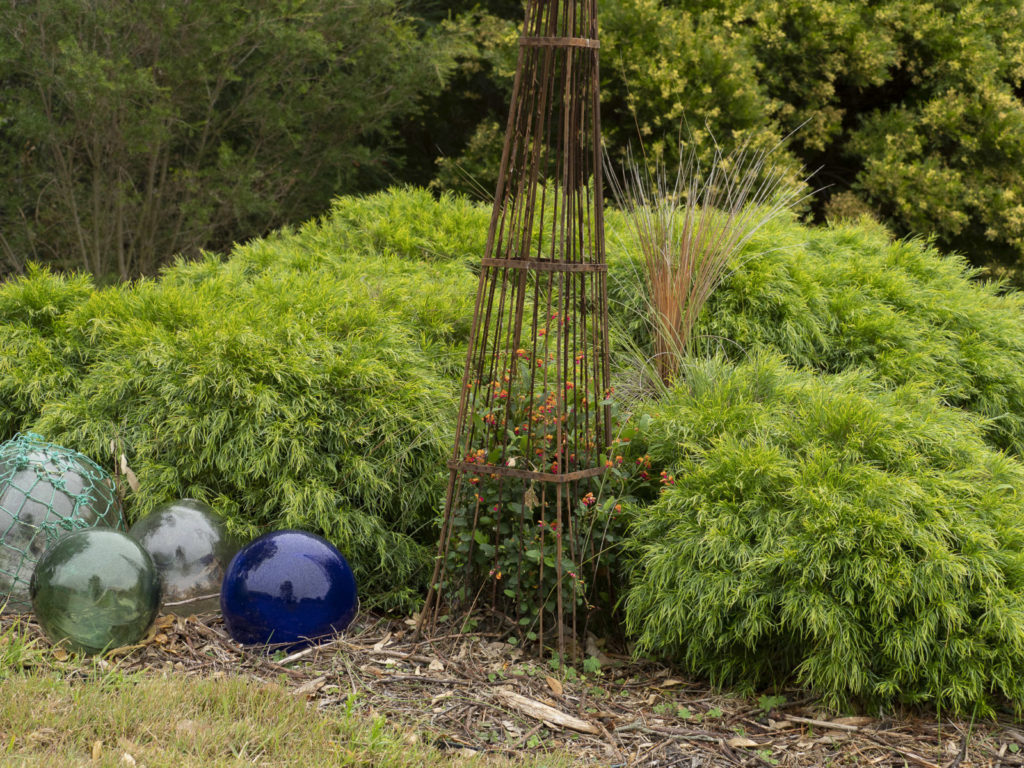
By contrast, a large Acacia vestita (hairy wattle) planted as part of a windbreak died. Another couple close by are fine. However, planted in 2006, perhaps they are coming close to end of life, being pioneer plants.
Of three Banksia integrifolia ‘Roller Coaster’, all 2 – 3m across, only one survived intact. The other two died off but are now coming back. Whether they will reach their former size and vigour is unclear, however, it’s a good lesson in letting things sit, even when you think they’re gone!
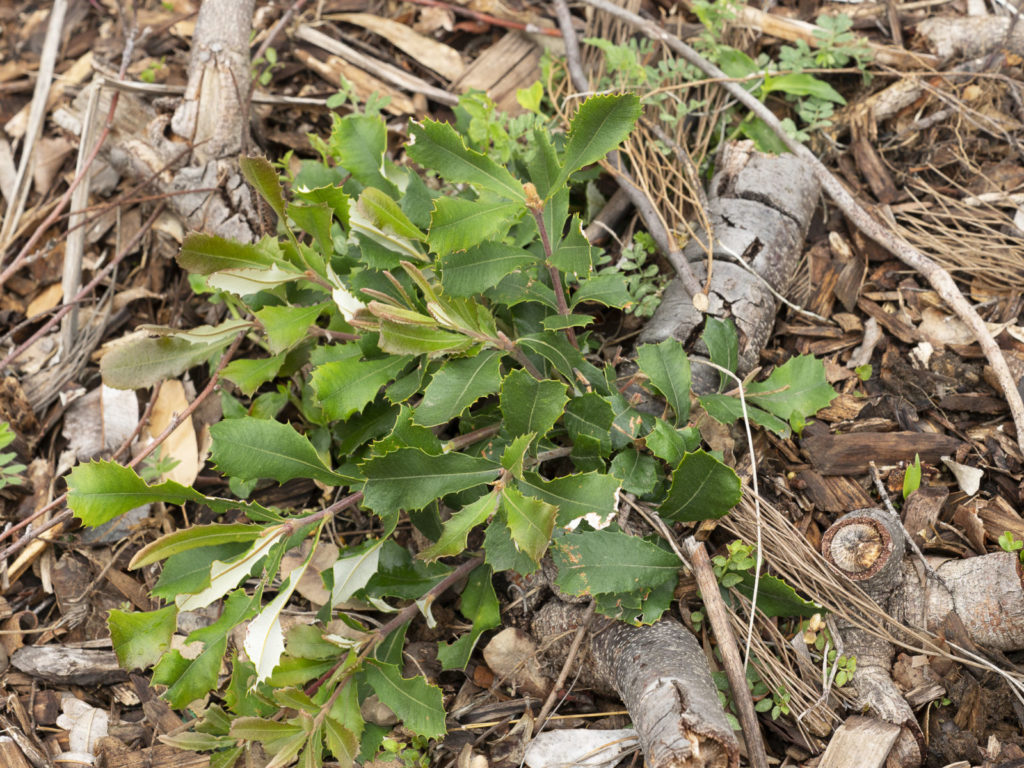
Another recovering plant is this lillypilly (probably Syzygium leuhmannii). This plant dropped all its leaves, while nearby plants were in fine shape. Our envirocycle discharges around these plants, so there may have been an over-concentration of nutrients at play, or it was just lack of water. Regardless, the shrub appears to be recovering, as expected from a plant used for extensive hedging.
Plants which died or are dying
Westringias struggle in my garden and have not fared well through the drought. It may be the clay soil, as westringias often grow naturally on the coast in more sandy soil. Some are surviving, particularly where there is a steady supply of water, but most of the Westringia ‘Smokey’ that I have planted are dying or have died. A pity, given I’d mass planted them against the attractive spikes of kangaroo paws.
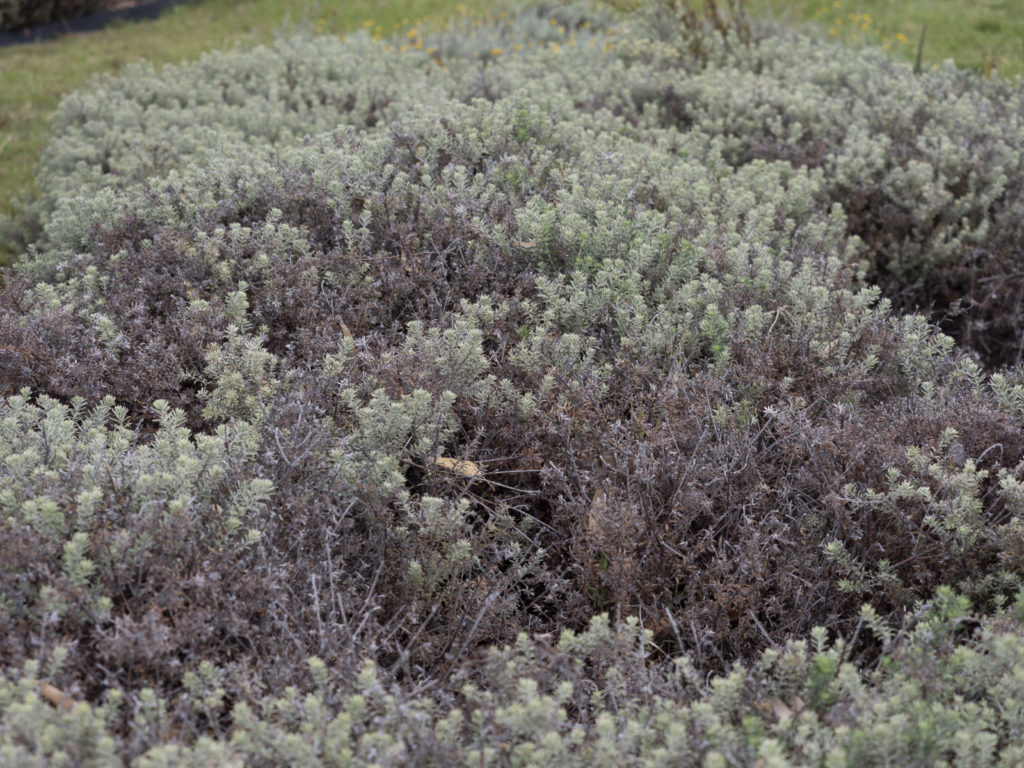
The gymea lily (Doryanthes excelsa) in this spot are struggling – one has died and the one next door is looking a bit sick. Doryanthes in other parts of the garden are thriving and so my conclusion is that they need ample water to survive. It’s understandable given those large green lush leaves.
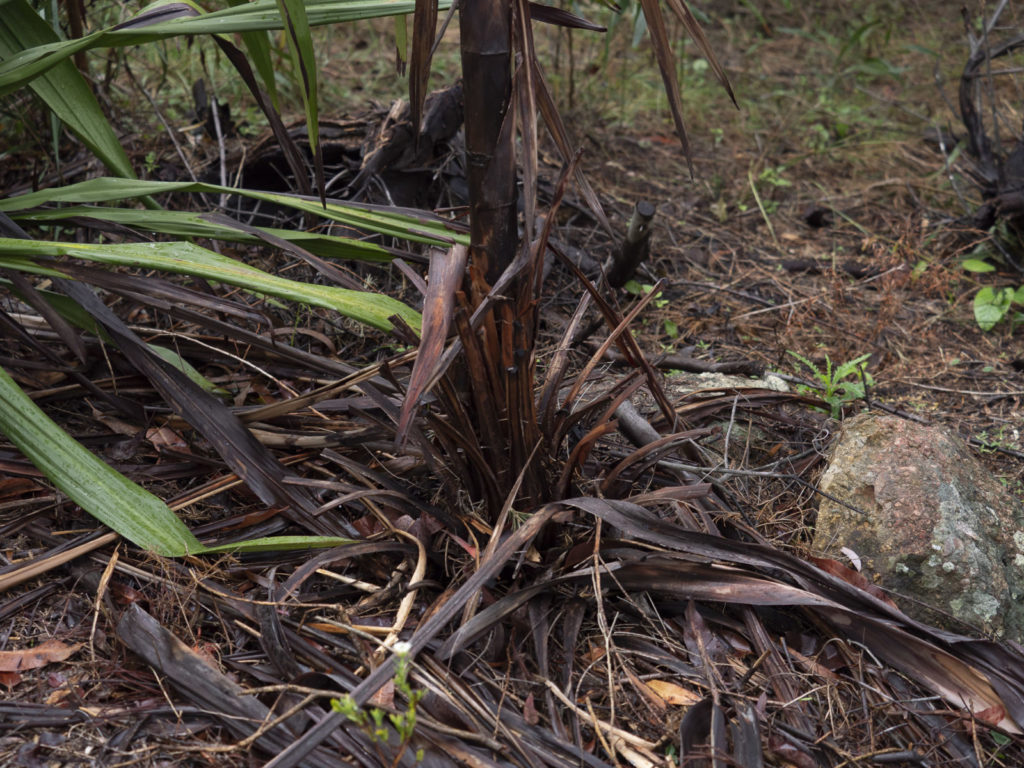
This lemon-scented gum (Corymbia citriodora) died in a week. No doubt it was dying for longer than that and I didn’t notice as it steadily dropped its leaves. I’ve not chopped it down, for habitat reasons and perhaps it will reshoot, but being in shallow rocky soil, it’s long term prognosis is not good.
A row of Hakea ‘Burrendong Beauty’ also died, whereas the plants around them (Leptospermum, Melaleuca, Elaeocarpus, Hibiscus) all survived. Such a pity – not only a big hole in the garden, but the loss of such a lovely plant.
So what now?
With a view to sustainability, more indigenous species are the go. I am even more conscious of microclimates, although I hope that won’t stop me from continuing to experiment – after all, we are still in relative infancy as to the tolerances of Australian native plants.
I am planting more closely together, as a weed prevention mechanism, and to eliminate or substantially reduce herbicides, also facilitating more of the local species popping up.
We are building a solar-powered pump from the dam to a new pond, so we can water the orchard trees and garden more fulsomely when conditions require it. It will also bring welcome water into the garden for the birds, wombats, wallabies, kangaroos, lizards and, well, snakes. We have also seen a few spotted quolls around, so we want to keep providing safe haven for all these animals.
I think Dorothea Mackellar had it right when she said Australia is ‘an opal-hearted country, a wilful, lavish land’. And it’s up to us to learn to cherish it, rather than bend it to our will.
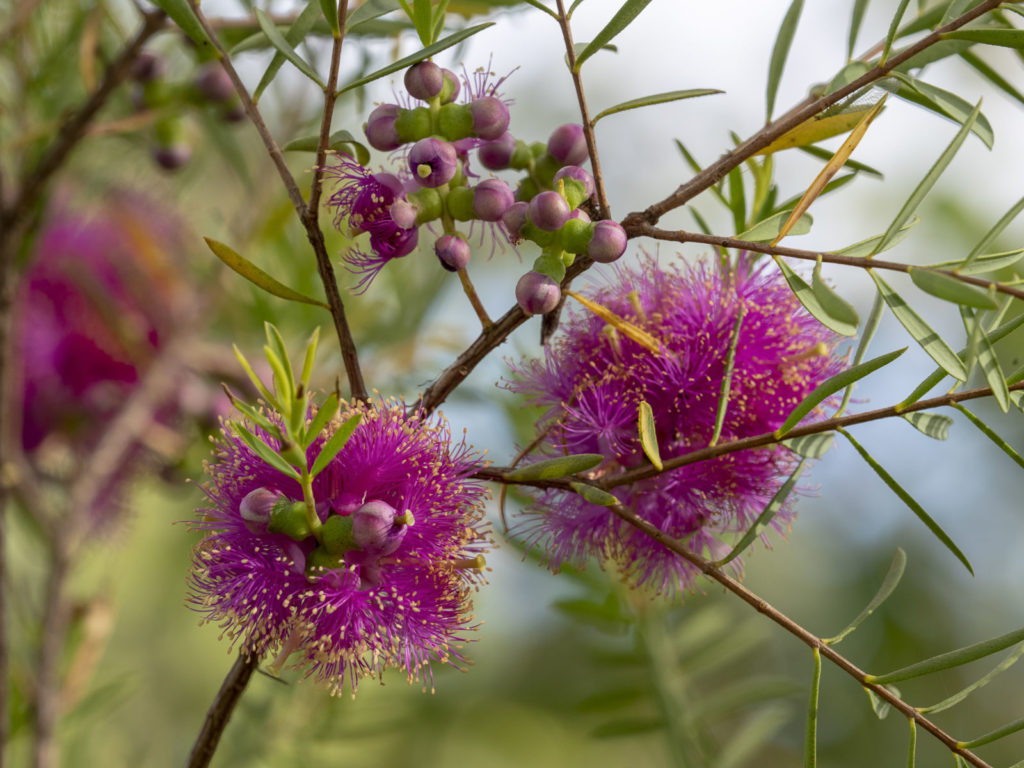
This story first appeared in GardenDrum in December 2018.
- Note: Naming correct at time of writing, though still not settled by the botanists!
